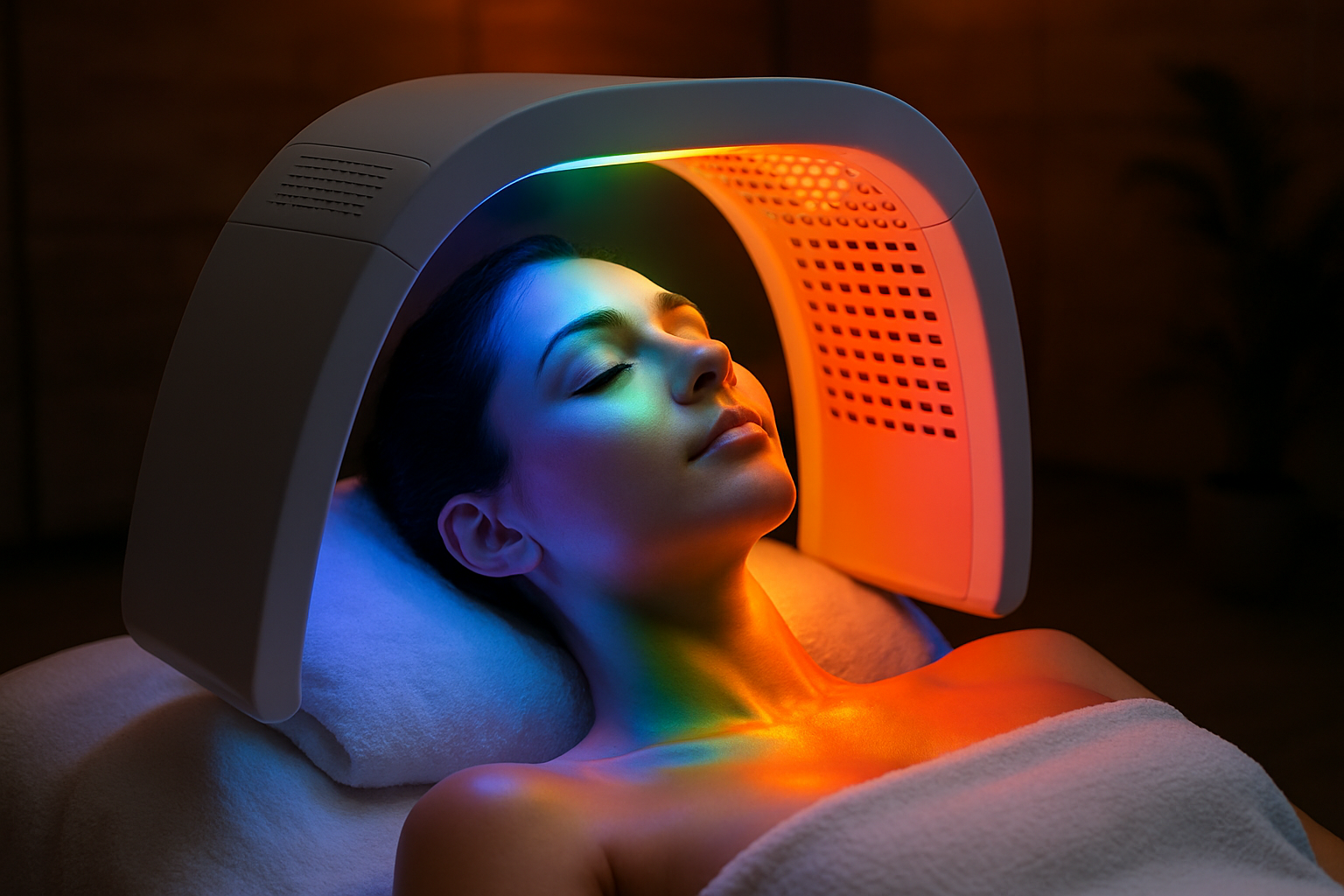Chromotherapy: The Science of Color Healing in Modern Wellness
In the ever-evolving world of beauty and wellness, an ancient practice is making a vibrant comeback. Chromotherapy, also known as color therapy, is emerging as a cutting-edge approach to holistic health and beauty. This centuries-old technique harnesses the power of color to promote physical, emotional, and mental well-being. As the beauty industry increasingly embraces natural and alternative therapies, chromotherapy is finding its way into spas, wellness centers, and even home care routines. But what exactly is chromotherapy, and how does it work? Let's dive into the colorful world of this fascinating wellness trend and explore its potential to transform our approach to beauty and self-care.

The theory behind chromotherapy draws from both ancient wisdom and modern scientific understanding. In traditional Chinese medicine and Ayurveda, colors have long been associated with different elements and healing properties. Modern research in fields such as optometry and neuroscience has begun to shed light on how color perception affects brain activity and physiological responses.
A Spectrum of Benefits: Applications in Beauty and Wellness
In the beauty industry, chromotherapy is being integrated into a wide range of treatments and products. LED light therapy, for example, uses different colored lights to target specific skin concerns. Red light is often used for anti-aging treatments, stimulating collagen production and reducing the appearance of fine lines and wrinkles. Blue light is employed to combat acne-causing bacteria and reduce inflammation.
Beyond skincare, chromotherapy is finding applications in nail salons, hair care, and even makeup. Color-changing nail polishes and hair dyes that respond to temperature or UV light are not just novelty items but are being marketed as mood-enhancing tools based on chromotherapy principles.
Wellness centers and spas are incorporating chromotherapy into their services through color-infused saunas, meditation rooms with programmable lighting, and even chromotherapy-enhanced massage tables. These offerings aim to provide a more immersive and personalized healing experience, tailoring the use of color to each client’s specific needs and goals.
The Science Behind the Hues: Research and Skepticism
While chromotherapy has a growing following, it’s important to note that scientific evidence supporting its efficacy is still limited. Some studies have shown promising results, particularly in the use of light therapy for conditions such as seasonal affective disorder and certain skin conditions. However, many claims about the healing properties of specific colors remain anecdotal.
Critics argue that any benefits from chromotherapy may be due to the placebo effect or simply the relaxation that comes from engaging in a soothing activity. Proponents, on the other hand, point to emerging research in fields such as photobiomodulation, which explores how light can affect cellular function.
Despite the ongoing debate, the beauty and wellness industries continue to invest in chromotherapy-inspired products and treatments, driven by consumer interest in holistic and natural approaches to health and beauty.
DIY Color Therapy: Bringing Chromotherapy Home
As interest in chromotherapy grows, so does the market for at-home color therapy products. From color-changing shower heads to smart light bulbs that can be programmed to emit specific hues, consumers now have a range of options for incorporating chromotherapy into their daily routines.
Some beauty brands are even developing “color prescriptions” – personalized skincare and makeup recommendations based on an individual’s energy needs and color preferences. These bespoke approaches aim to create a more intuitive and holistic beauty regimen that addresses both physical and emotional well-being.
For those looking to experiment with chromotherapy at home, experts suggest starting small. This could involve something as simple as wearing clothing in colors that correspond to desired emotional states or incorporating colorful fruits and vegetables into one’s diet based on chromotherapy principles.
The Future of Color: Integrating Chromotherapy in Modern Wellness
As the beauty and wellness industries continue to evolve, chromotherapy is likely to play an increasingly significant role. The integration of technology, such as virtual reality and augmented reality, could lead to more sophisticated and personalized color therapy experiences.
Moreover, as research in fields like neuroaesthetics and environmental psychology advances, we may gain a deeper understanding of how color impacts our well-being. This could lead to more targeted and effective chromotherapy applications in both professional and personal care settings.
However, as with any emerging wellness trend, it’s crucial to approach chromotherapy with a balanced perspective. While the potential benefits are intriguing, it should be seen as a complementary approach rather than a replacement for conventional medical treatments.
In conclusion, chromotherapy represents a fascinating intersection of ancient wisdom and modern innovation in the beauty and wellness space. As we continue to explore the complex relationships between color, light, and human health, chromotherapy offers a vibrant new dimension to our understanding of holistic well-being. Whether it becomes a mainstream practice or remains a niche interest, the exploration of color’s impact on our physical and emotional states is sure to yield colorful insights into the nature of beauty and wellness.





